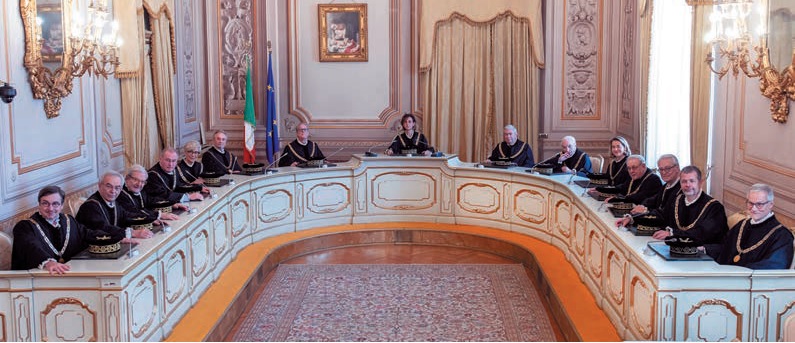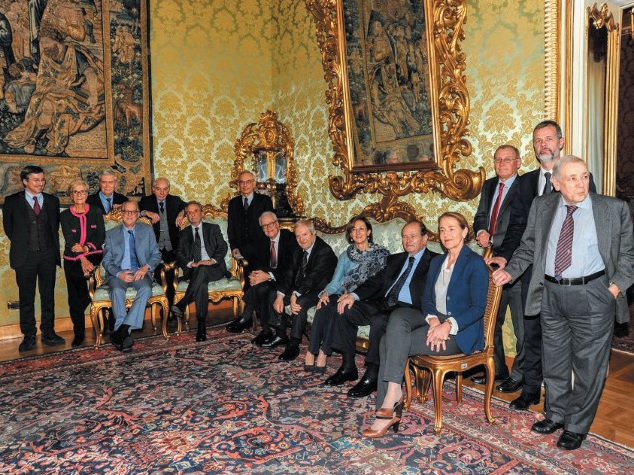The Constitutional Court

How and Why Constitutional Courts Come into Being
A Young Institution
The Constitutional Court is a relatively recent institution. Nothing
similar existed in the Italian State before the formal enactment of the
Italian Constitution of 1948. In various other European countries, legal
provision for similar institutions was made for the first time in the
1920s, based primarily on the theories of the renowned Austrian democratic
jurist, Hans Kelsen. Apart from the Italian Constitution, after the
Second World War, different forms of “constitutional courts” (or “tribunals”
or “councils”) were provided for in the Constitutions of West
Germany (1949), France (1958), Portugal (1974), Spain (1978), and
Yugoslavia (1963). More recently, nearly all the new constitutions of the
countries of Eastern Europe and the former Soviet Union have made
provision for similar organs, as have other states outside Europe. Today,
a means of guaranteeing the constitutionality of laws appears to exist, in
various forms, in 192 of the 196 generally recognized countries of the
world.
However, even if constitutional courts are relatively young institutions,
the problems which led to their creation, and to which they try to provide
answers, go back a long way.
The Omnipotence of Parliament?
According to the European constitutional tradition that developed primarily
in Great Britain in the seventeenth and eighteenth centuries and in
post-revolutionary France, state institutions are subject to the law, and an
independent judiciary is empowered to resolve legal disputes by applying
and enforcing the rule of law.
The norms embodied in the rule of law spring from rules articulated
and applied by the judiciary, and from statutes enacted by bodies with legislative
power, that is, parliaments elected by the citizens and therefore
representative of the popular will. The role of the judiciary is not to create
or amend statutes, but to apply them, and it is the role of constitutions to
recognise and regulate this separation of powers.
In this tradition, the law typically expresses the supreme will of the
authority of the State. Parliament enacts laws, exercising complete discretion
in drafting them, and is therefore in a sense “omnipotent.”
According to a famous comment, the British Parliament “can do anything
but make a man a woman and a woman a man”. But are parliaments
free to change a constitution? Many nineteenth-century constitutions were not explicit
on this point; some later constitutions established
special procedures for their amendment. The fact remained, however,
that while acts of administrative authorities were subject to review by the
judiciary, for compliance with statutes, no one (not even a judge) was
authorized to review the statutes themselves – the highest expression of
the “sovereignty” of the State – and to assess their conformity with the
constitution.

The American Experience: Judicial Review
In contrast with the European experience, the United States took a different
path. The American Constitution establishes a balance between the
powers of the federal government and those of the states, and does not
contemplate the “omnipotence” of the legislature. The legislature is conceived
as a “delegate” of the citizens and, as such, cannot act in contravention
of the rights of those same citizens from whom it derives its powers.
This constitutional doctrine was set out in The Federalist Papers, the first
and most celebrated commentary on the American Constitution. As of the
early nineteenth century, American courts were invested with the power
to review the laws of the states and of the federal government, and to
declare them void where they were deemed incompatible with the
Constitution. This regarded all constitutional provisions, including those
regarding the allocation of powers among the states and the federal government,
as well as those protecting the rights of citizens against encroachment
by the government, such as freedom from arbitrary arrest and freedom
of speech, which were introduced in the Bill of Rights and other
amendments to the U.S. Constitution.
In the famous case of Marbury v. Madison (1803), the Supreme Court
held that the Constitution is itself a law, superior to other laws. Moreover,
it stipulated that “ordinary” laws – that is, statutes enacted by the legislature
– must respect the Constitution, unless they are void, and every judge
has both the power and the duty not to apply them.
The European Experience: a Check on Parliament
In Europe the concept of the supremacy of the law, which was viewed
as the expression of the State or popular sovereignty as represented by the
Parliament (heir, in a certain sense, to the absolute sovereigns of the past,
whose will was subject to no legal limitations), hindered acceptance of the
notion that a body other than Parliament could review the laws and refuse
to apply a legal provision on the grounds that it was contrary to the constitution.
The twentieth century was a period shaken by wars and deeply
marked by authoritarian political experiences and the repression of democratic
institutions. In the wake of this experience, there emerged a growing
awareness that safeguarding the basic rights established in constitutions
and the constitutional balance of powers meant being able to exert control
even over the highest expression of the will of representative organs, including
parliaments, and thus on the laws themselves. It was generally believed,
however, that the normal organs of the judiciary were not equipped to
carry out this sort of control. Such organs are authorized to apply the laws,
but not to judge them. This is because they consist of unelected career magistrates
who are not in any way representative and who lack the necessary
political sensitivity to carry out this task. Constitutional review of a statute
is not the same as review, for example, of the legality of an act of executive
power: many constitutional provisions are generic, and to apply a constitution
is never merely a technical operation. On the other hand, constitutional
review could not be entrusted to the same Parliament that enacts the
statutes under review, because “the reviewed cannot review himself.”
Therefore it was decided that the solution would be to create a special
tribunal or court, operating pursuant to judicial procedures, and made up
of legal experts chosen specifically for this function, elected by Parliament
or by other supreme State institutions for fixed tenures, not removable at
will, and independent of the political branches. This institution was
entrusted with reviewing the constitutionality of statutes and of voiding
them if they were unconstitutional. In this way constitutional review was
established–that is, a judicial rather than a political activity (given the
character of the procedures used), and an activity designed to ensure the
observance of constitutional provisions. Although not a political activity
in the strict sense of the term, the exercise of constitutional review is an activity
which works in proximity with, and interacts with, the supreme
political institutions that exercise legislative power.

An Arbitrator of Constitutional Conflicts
In addition to acting as “judges of the laws,” constitutional courts are
often called on to exercise other functions, generally associated with guaranteeing
the observance of constitutional rules. These are primarily the
functions of resolving controversies between the central State and federated
States or territorial communities (e.g., the Regions), thus maintaining
a balance between the center and periphery, and of resolving conflicts
between different branches of the central State.
The Constitutional Court is also called on in cases where there is a need
for an impartial organ to resolve questions for which ordinary courts are
deemed insufficiently authoritative to pass judgement.
To sum up, in nearly all contemporary constitutional contexts it is generally
recognized that, in the name of the constitution, there is a need for
mechanisms of judicial review and impartial arbitration with respect to
the supreme activities of the State and its institutions. In countries that
have followed the American model, it is the ordinary supreme courts that
have these powers, whereas in countries that have followed the European
model (including Italy), it is the constitutional courts or tribunals.
Supreme or constitutional courts therefore have the task of guaranteeing
the observance of the constitution, independently and impartially.
